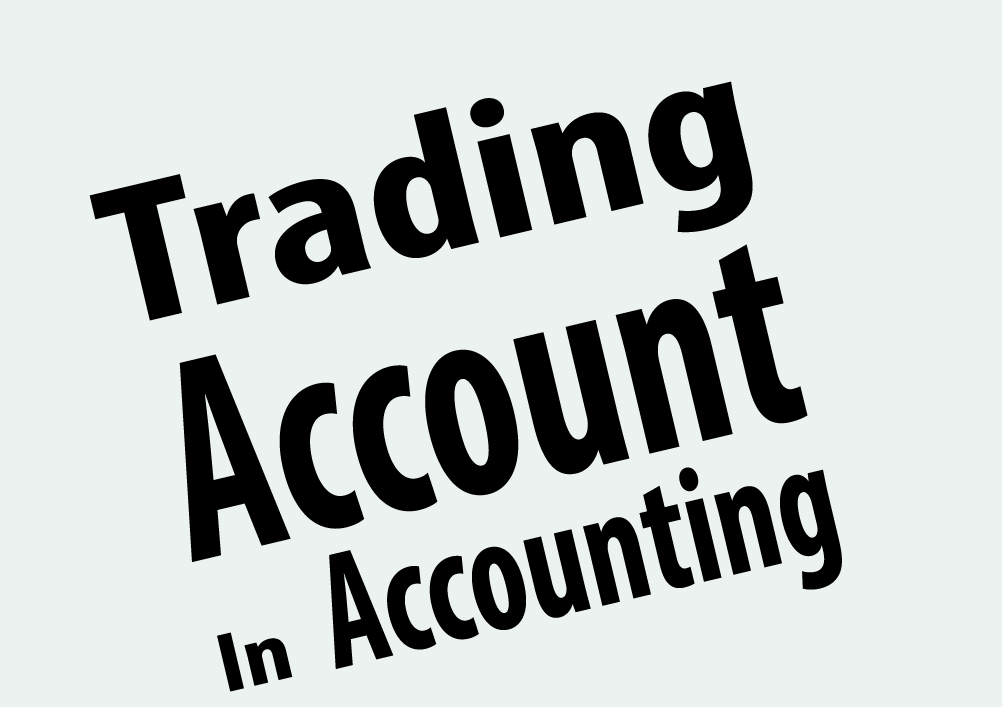The name trading account is given to a ledger account used by trading business firms to aid in the formation of income statement and balance sheet. A trading business firm deals with the buying and selling goods and services. Usually, this account is prepared by firms that sell goods and not by the firms which provide services.
The basic purpose of a trading account is to obtain the value of a gross profit/loss of the company for a specific accounting period. This value then goes into the profit and loss statement. The gross profit or loss analysis is important for making effective decisions about promoting or halting the production of particular goods, depending on the profit to cost ratio of those goods.
Also ead, invntory management strategies
Components of Trading Account
There are six main components of a trading account including opening and closing stock, net purchases, direct expenses, net sales, and gross profit/loss. Each component is categorized as being on the debit or credit side of the trading account and explained below.
Debit side of trading account:
1.Opening stock
From the perspective of trading businesses, the finished goods of the previous accounting period that were not sold are taken as the opening stock of the current accounting period.
2.Net purchases
In a trading concern, purchases are the expenses of buying finished goods to sell them further. Suppose any of these purchased goods are returned to the supplier. In that case, the corresponding amount is titled as ‘purchase returns’ or ‘returns outward,’ and is subtracted from purchases to obtain net purchases.
Net purchases = purchases – purchase returns or returns outward
3.Direct expenses
The expenses incurred for buying purchases and converting raw materials into ready-for-sale finished goods are direct expenses. This includes the cost associated with producing goods like direct labor and direct material costs, production overheads etc.
Credit side: side of trading account
4.Net sales
Sales is the amount a business earns when goods are sold to the end customers. The customers might return some products due to reasons like a defective product. The value of such returned goods, discounts, or allowances is subtracted from sales as ‘sales returns’ or ‘returns outward’ to obtain net sales.
Net sales = sales – sale returns or returns inward
5.Closing stock
From the perspective of trading businesses, the finished goods of the current accounting period that are not sold are considered closing stock. Note that the current accounting period’s closing stock will be considered the opening stock of the next accounting cycle.
Output:
6.Gross profit/loss
The main output of a trading account is gross profit or loss. Gross profit is the overall profit earned without cutting the administrative and selling expenses. When the net sales exceed the COGS for an accounting period, the firm is said to have made a gross profit written on the debit side of the trading account. However, if the COGS is higher than the net sales for the period, the firm has made a gross loss shown on the credit side of the trading account. It is represented as follows:
Gross profit = net sales > cost of goods sold
Gross loss = cost of goods sold > net sales
Where,
Cost of goods sold (COGS) = opening stock + net purchases + direct expenses – closing stock

Format and Example of Trading Account
Suppose a apparel and footwear trading business had the following particulars for the year ended on 31st December 2021.
Opening stock (on 31st December, 2020) = $30,000
Purchases = $10,000
Purchase returns = $5000
Direct expenses = $ 15,000
Sales = $80,000
Sales return = $10,000
Closing stock = $20,000
Trading account
| Debit particulars | Amount $ | Credit particulars | Amount $ |
| Opening stock | 30,000 | Sales | 80,000 |
| Purchases | 10,000 | Less: Sales returns | (10,000) |
| Less: Purchase returns | (5000) | Closing stock | 20,000 |
| Direct expenses | 15,000 | ||
| Gross Profit | 40,000 |
Given trading account will be closed in the profit and loss account as follows.
| Particulars | Debit | Credit |
| Profit and Loss Account | 50,000 | |
| Opening stock | 30,000 | |
| Net purchases | 5,000 | |
| Direct expenses | 15,000 |
In a given transaction, we have closed debit items of the trading account in the profit and loss account.
| Particulars | Debit | Credit |
| Profit and loss account Account | 90,000 | |
| Sales | 70,000 | |
| Closing stock | 20,000 | |
In a given transaction, we have closed credit items of trading account in profit and account. Please note that on the debit side there is $50,000 and on the credit side, there is $90,000. It means there is a $ balance of 40,000 on the credit side which is gross profit.
So, the trading account output i.e., gross profit/loss is an essential component for any business because it indicates the capacity of a business to meet its expenses. Hence, gross profit value should be greater than expenses to have a net profit instead of a net loss. Also, a trading account includes important data like purchases and purchase returns along with sales and sale returns for calculating gross profit/loss. This helps businesses to generate financial statement.
